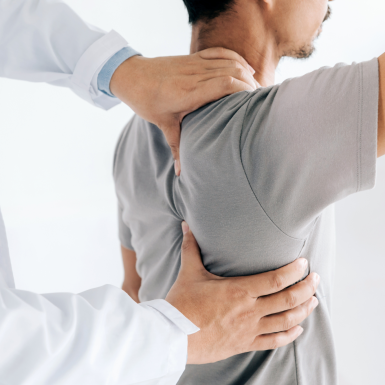A Physiotherapist’s Role in Joint Care: A Collaborative Approach with GPs
Physiotherapists play a key role within multidisciplinary primary care teams, helping to enhance the patient experience and manage musculoskeletal (MSK) caseload. Nearly one-third (30%) of all GP appointments can be attributed to musculoskeletal (MSK) conditions. 1 Specialist musculoskeletal physiotherapists can diagnose and advise patients with MSK conditions, freeing up GPs’ time and speed up patient access to expert intervention.
Many joint-related conditions, such as osteoarthritis, rheumatoid arthritis and chronic back pain, require ongoing management. Physiotherapists can collaborate with GPs to provide long-term joint care plans aimed at slowing disease progression and improving quality of life.
Additionally, physiotherapists are well placed to initiate regular reviews of a patient’s progress and adapt treatment plans based on evolving needs or changes in symptoms. This partnership ensures that patients with chronic joint conditions receive consistent, coordinated care between their GP and physiotherapist, addressing both the medical and physical aspects of their condition.
For patients experiencing joint pain, particularly those who may not be candidates for long-term pharmacological treatment, physiotherapists can offer a variety of non-pharmacological interventions including manual therapy, electrotherapy techniques and education on pain management strategies, such as exercise therapy and lifestyle modifications.
Physiotherapists excel in patient education, empowering individuals to take an active role in managing their joint and musculoskeletal health. Self-management techniques may include:

1. Exercises for Range of Motion: To preserve or enhance joint flexibility, physiotherapists may recommend range of motion exercises that help to improve joint function and prevent stiffness.
2. Strength Training: Customised strength training programs can be designed to increase muscle tone, thereby reducing stress on the joints.
3. Assistive Devices and Splints: To support joint function and alleviate pain, physiotherapists may advise the use of splints and assistive devices. While walking aids or braces can help lessen the load on weight-bearing joints, customised splints can help stabilise and protect injured joints.
4. Supplements: Physiotherapists can educate individuals about supplements that have been shown to be beneficial. One option could be a galactolipid found in rose-hips, which can help alleviate symptoms of joint health conditions. Extensive studies involving over 400 patients with chronic pain conditions, such as osteoarthritis, have shown that GOPO® provides significant and consistent pain relief, as well as improved joint function. In one study, 8 out of 10 patients reported a significant reduction in pain after just 3 weeks of GOPO®. 2 The natural anti-inflammatory properties of GOPO® make it a viable alternative to painkillers,iv without the risk of harmful side effects.
Overall, physiotherapists play a pivotal role in maintaining and restoring joint health. Whether they are working with patients recovering from injury, managing chronic joint conditions, or promoting preventive measures, physiotherapists are often at the forefront of rehabilitation. By enhancing movement, relieving pain and improving function, physiotherapists contribute significantly to long-term joint health.
